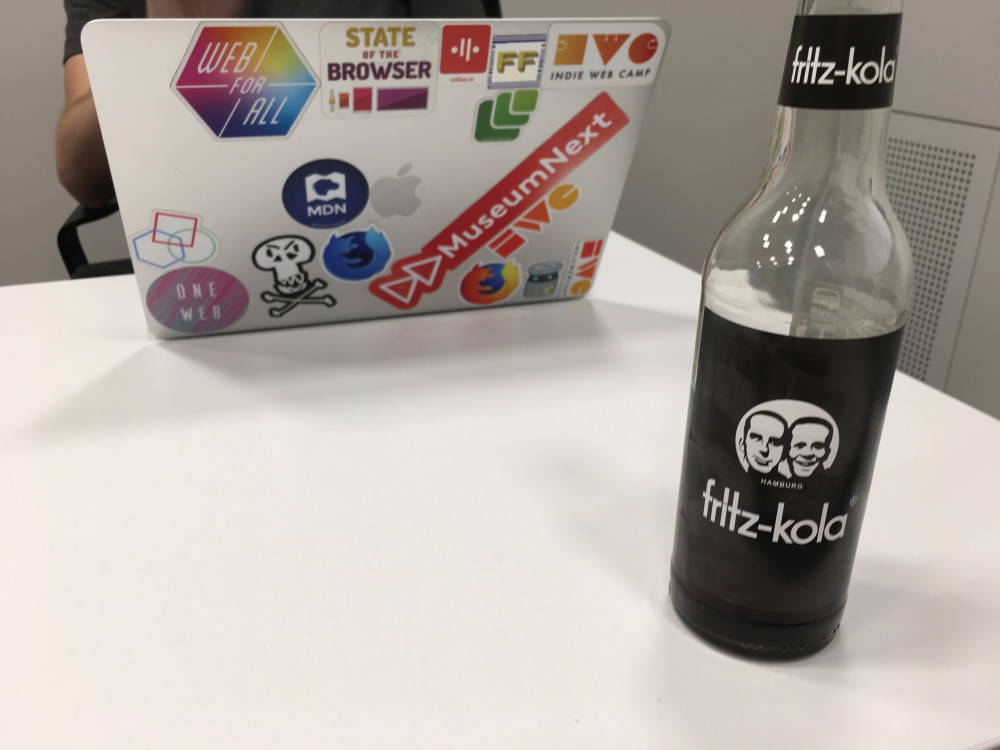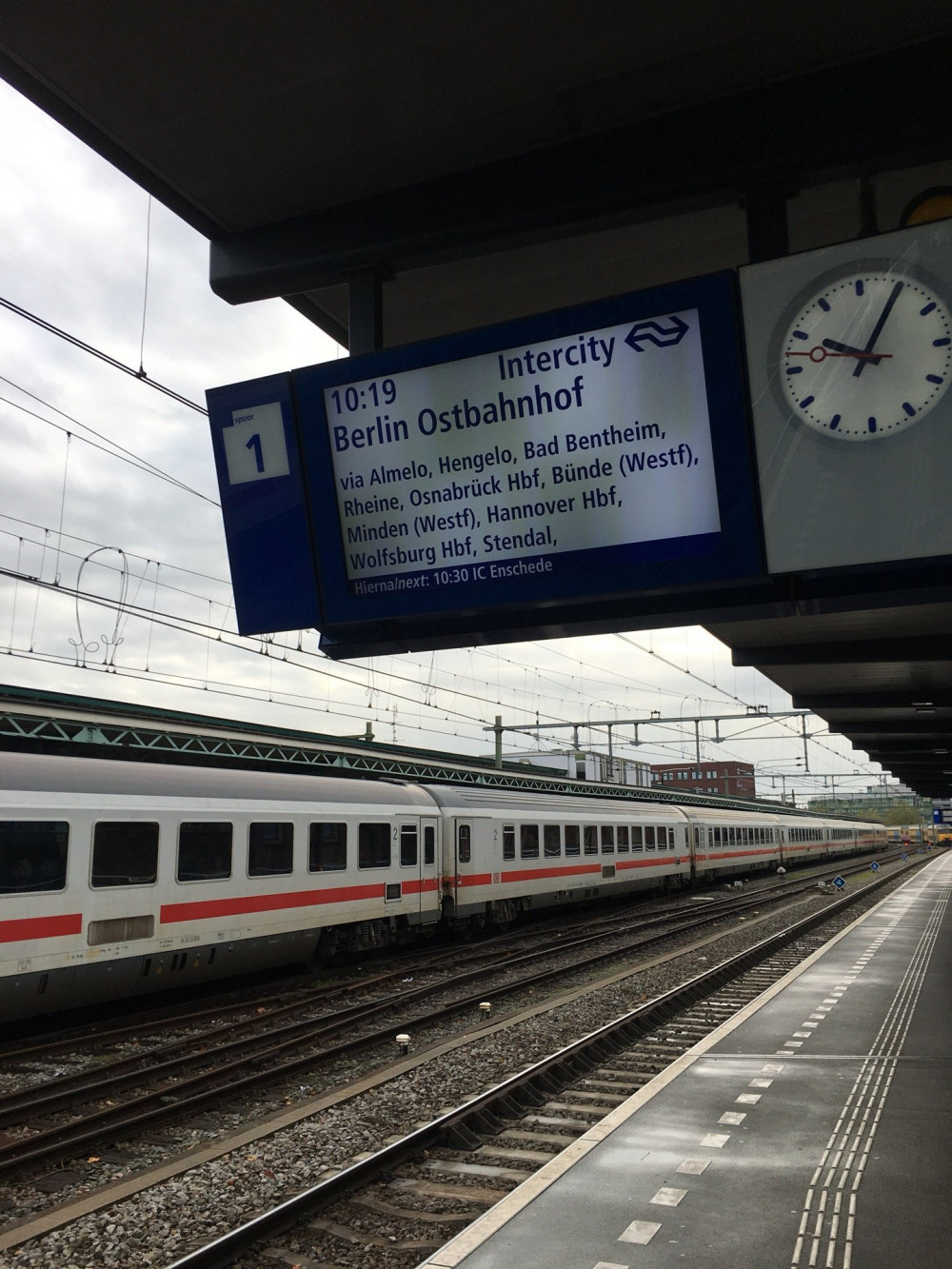Avondje coden met Japanse 90s op de achtergrond. Jullie hebben geen idee.
Seblog.nl
Het voordeel van pepernoten op werk is dat je al misselijk bent voor je ze in de Albert Heijn tegenkomt.
 Seb heeft dit gebookmarkt.
Seb heeft dit gebookmarkt.Vooral het plaatje halverwege is erg goed.
Exploring queries for private feeds
One of the discussions this weekend in Berlin was on the topic of private feeds. Martijn and Sven made great progress by implemeting a flow to fetch private pages using various endpoints for tokens and authentication.
Apart from the question how to fetch private feeds, there is also the question how to present private feeds. The easiest way is probably to give every user their own feed, containing only the private posts for them. They can separately follow your public feed, and your queries are easier.
But in line with Silo’s like Twitter and Facebook, I think I would prefer presenting one feed, with both public and private posts, scoped for the authenticated user. When I described this to Aaron he said that he liked it, but that he didn’t know where to begin with writing code that does that. I didn’t either, but it made me want to explore the possibilities.
On a sidenote: this feed design also raises another problem, of how to signal to the user that they can see this post but no-one else. I leave that one for another time.
Drawing rough lines around boxes
Borrowing from Facebook, there are roughly four categories you can share content in:
- public – These posts can be seen by anyone. This is the default on nearly all IndieWeb sites today.
- authenticated – These posts can only been seen if you sign in, but, anyone can sign in. Facebook has this category and we can mimic that with IndieAuth, but it might not add that much value.
- friends only – This is a big category on Facebook, and made possible by the friendslist, which is also a big feature on Facebook.
- selected audience – Facebook also allows you to pick your audience on a per-post basis. This can be done by either selecting individual users, or selecting lists, which can contain users.
There is also the possibility of excluding specific people or lists from posts, but that one is even more advanced, so I put it out of scope for this exploration.
The first category is easy, for we already have it. The second category is harder, but once you got past the authentication it’s easy again. One could query a database for visibility = 'authenticated' OR visibility = 'public', that would work.
The third category would require us to keep a list of friends. The fourth category could also require us to keep lists of people, so it might be better to merge them.
Throw in some tables
This brings us to a simple database schema. I see three main tables: entries, people and groups, with a pivot table between all of them: entry_group, entry_person and group_person. I have chosen ‘people’ over ‘users’, because I might not want to give these people write access to anything, but they could be users as well.
It should work like this:
- Entries have a field for
visibility, which can me markedpublic,authenticatedorprivate. - People can belong to groups, which have names. Think ‘Friends’, ‘Family’ and ‘Coworkers’.
- Entries can be opened up to individual people, or for a whole group.
There might be better ways of naming these, but I like the simplicity of this model. With private posts and audiences, I will always have to manage some form of lists, and this is the most simple way of doing it.
Enter the monster query
So, with some trial and error, PHPUnit tests, and a lot of Laravel magic I came to the following monster query for these tables:
(
select `entries`.*
from `groups`
inner join `group_person`
on `groups`.`id` = `group_person`.`group_id`
inner join `entry_group`
on `groups`.`id` = `entry_group`.`group_id`
inner join `entries`
on `entries`.`id` = `entry_group`.`entry_id`
where `group_person`.`person_id` = ?
)
union
(
select `entries`.*
from `entries`
inner join `entry_person`
on `entries`.`id` = `entry_person`.`entry_id`
where `entry_person`.`person_id` = ?
)
union
(
select *
from `entries`
where `visibility` = 'public'
)
order by `published_at` desc... which is way shorter when expressed in with Laravel’s Eloquent:
class Person extends Model
{
public function timeline()
{
return $this->groups()
->join('entry_group', 'groups.id', '=', 'entry_group.group_id')
->join('entries', 'entries.id', '=', 'entry_group.entry_id')
->select('entries.*')
->union($this->entries()->select('entries.*'))
->union(Entry::whereVisibility('public'))
->orderBy('published_at', 'desc');
}
public function groups()
{
return $this->belongsToMany(Group::class);
}
public function entries()
{
return $this->belongsToMany(Entry::class);
}
}Since the method timeline() returns the Query object, other where-clauses can be appended when needed.
I am in a bit of a fight with Laravel still, for it adds
'`group_person`.`person_id` as `pivot_person_id`, `group_person`.`group_id` as `pivot_group_id`' to the first query, which makes it blow up, but the raw query works!
There is possibly a better way of doing it, but this is a start! Feel free to steal or improve, but if you improve, let me know.
 Seb vindt dit leuk.
Seb vindt dit leuk.Ik geloof dat de lamp buiten ook FaceID heeft: hij gaat steeds alleen aan als ik er net in kijk.

At IWC Berlin demoing my photo workflow!
 check-in bij Mozilla Berlin, Berlin
check-in bij Mozilla Berlin, BerlinEr is geen tijdsverschil met Berlijn, maar, er is wel tijdsverschil met Berlijn. De zon gaat hier gewoon een half uur eerder onder vandaag. #trainlag
Aan de ene kant ben ik blij dat ik 4 euro heb uitgegeven om plek 4-036 in de trein naar Berlijn te reserveren. Aan de andere kant hebben zowel de mensen van 4-038 als de mensen van 5-036 me geprobeerd weg te sturen. Nein, bitte.
 check-in bij Station Deventer, Deventer
check-in bij Station Deventer, Deventer
Het is gek hoe de route naar mijn werk en een reis naar Berlijn voor het eerste stuk zo gelijk zijn. Het voelt heel vrij, dat ik in principe op elk moment naar een verre bestemming zou kunnen vertrekken: het begint altijd hetzelfde.
 Seb vindt Modeling Airline Flights in Neo4j leuk.
Seb vindt Modeling Airline Flights in Neo4j leuk. Seb vindt dit leuk.
Seb vindt dit leuk.Ik heb een heel hippe Bose SilentComfort 35ii, maar ik luister er nu klassieke muziek op tijdens werk. Ben ik nu oud?
 Seb heeft dit gebookmarkt.
Seb heeft dit gebookmarkt.Old video, it seems, but good overview of what not to do in Neo4j.

Zondagochtend.
 Seb heeft dit gebookmarkt.
Seb heeft dit gebookmarkt.Nice overview of some more advanced modeling strategies with Neo4j and Graph Databases in general.
Woord van de dag: mede-.me'er, iemand die ook een .me-domeinnaam heeft.
 Seb heeft dit gebookmarkt.
Seb heeft dit gebookmarkt.Nice article about renderless components.
Spent a good evening reading up on Reader-discussions and -ideas, then on refactoring the Microsub endpoint in Leesmap into separate Controllers. Very curious how Aaron this does in Aperture (which is also PHP/Laravel), but still not looking at his code until I'm done with it.

 Twitter
Twitter Instagram
Instagram LinkedIn
LinkedIn Github
Github Strava
Strava Facebook
Facebook